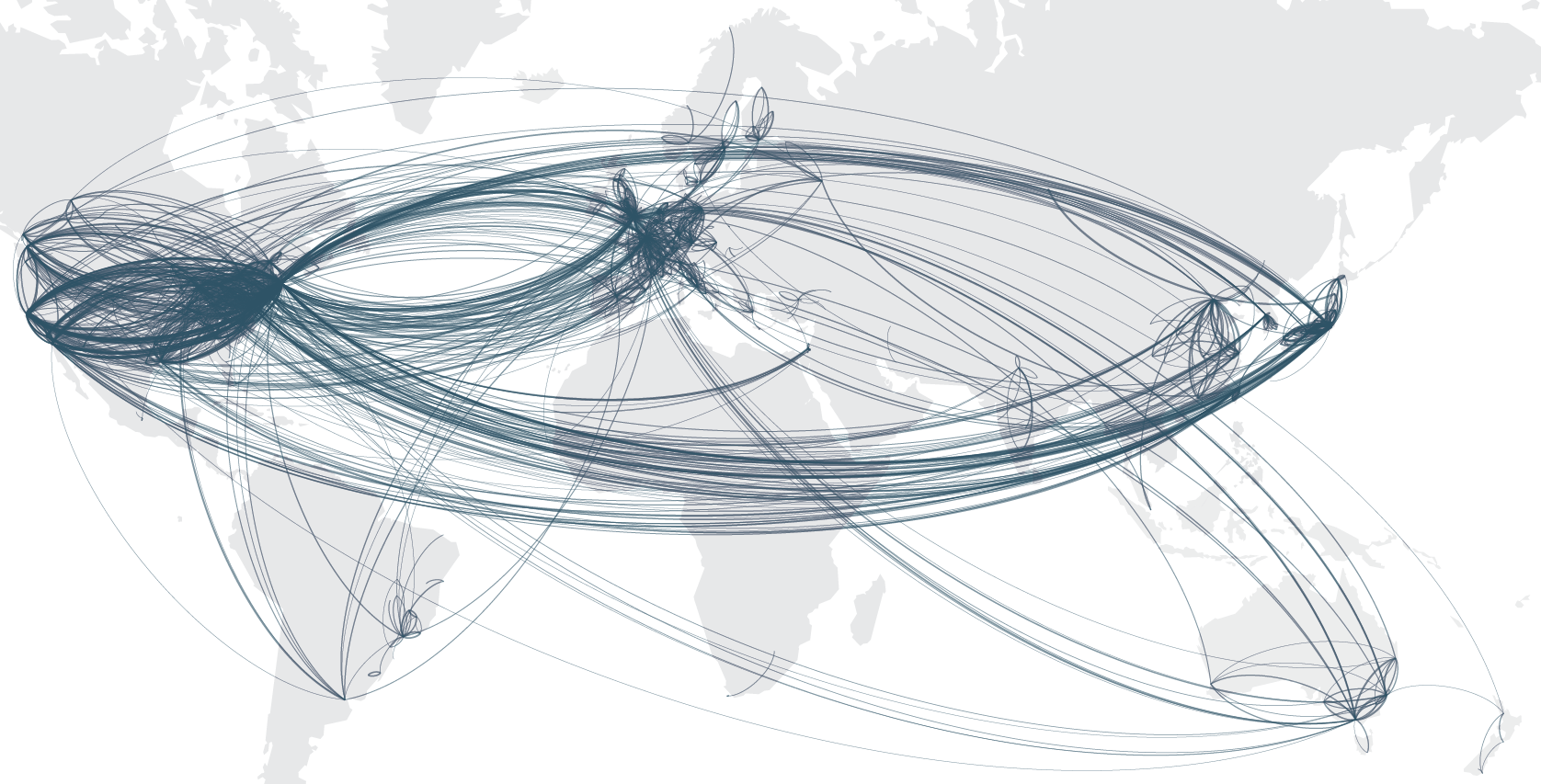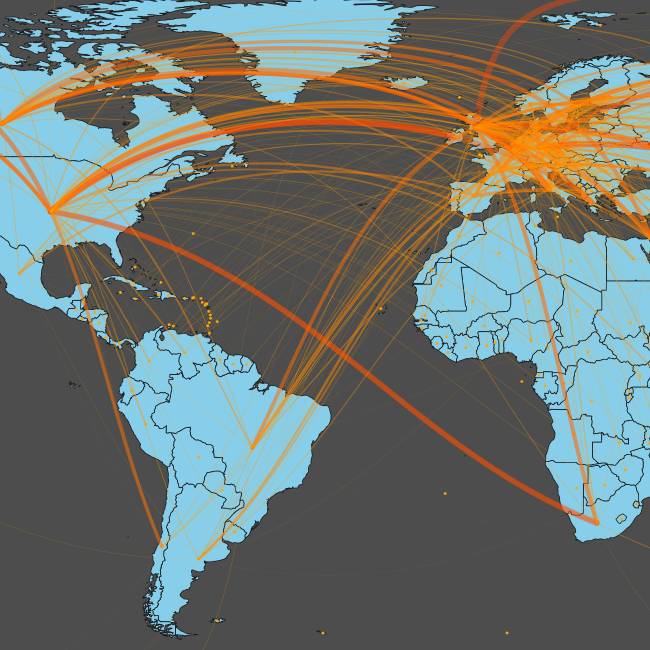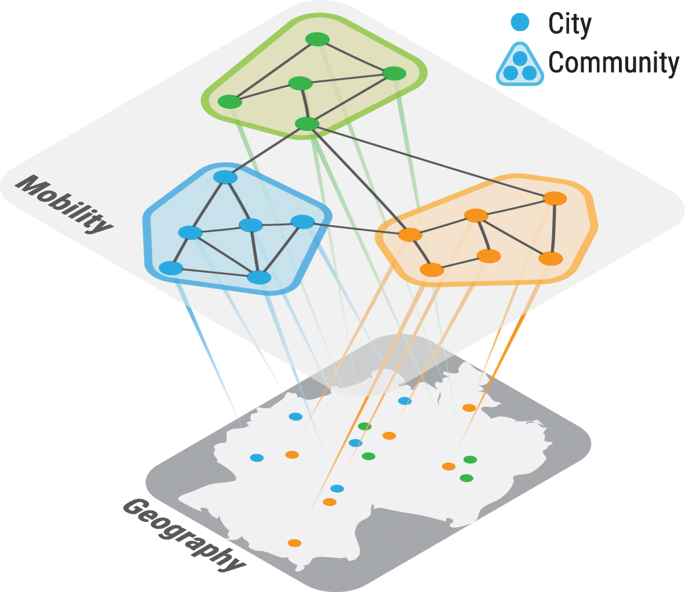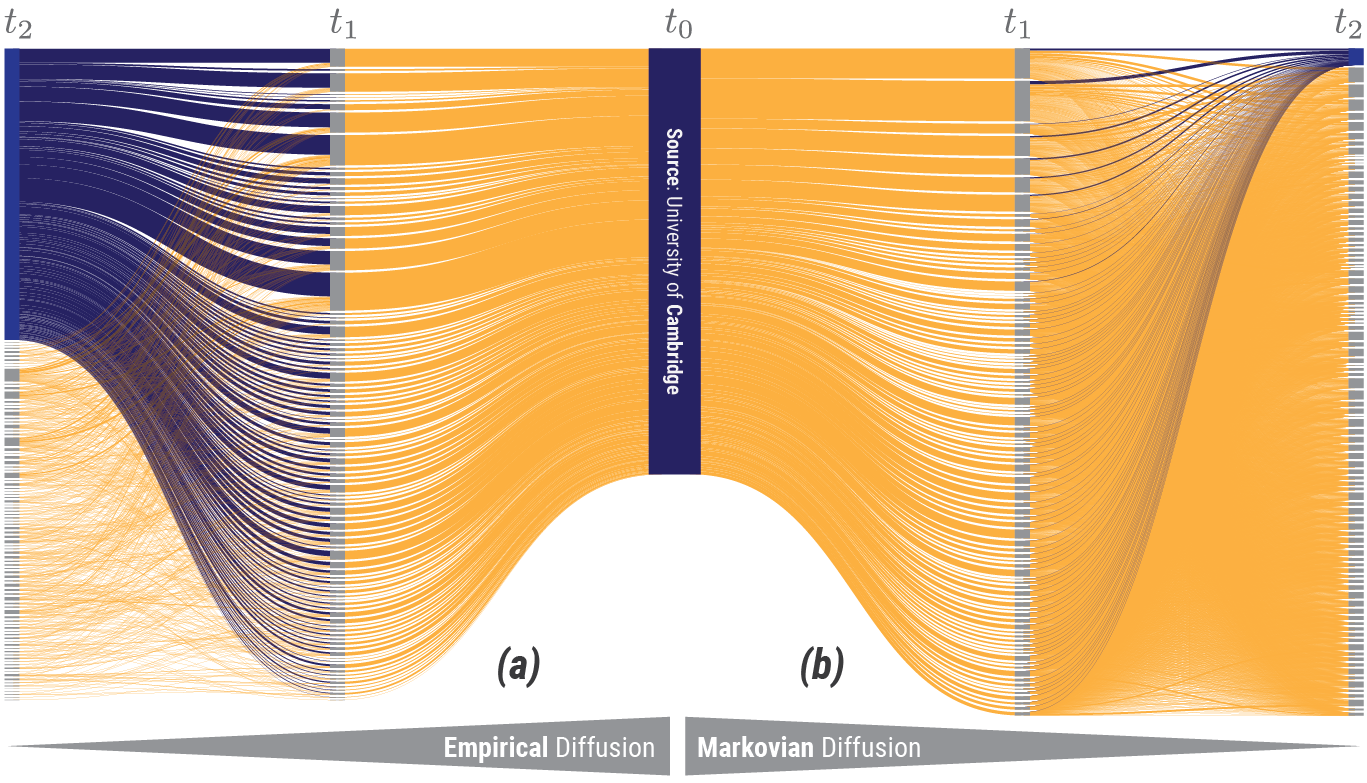Dr. Luca Verginer
I am an economist researching through the methods of complex systems, temporal network analysis, machine learning and standard econometrics migration of high skill labour, citation dynamics in patents and papers and spatial diffusion of knowledge.
I am also a core contributor of Pathpy, the open source temporal network analysis library developed here at SG and the DAG Group at the University of Zürich.Work on the exciting and novel field of temporal networks allows me to test these methods on various economic networks (e.g. Supply Chains).
Prior to joining Chair of Systems Design Team, I received a Master's degree in Economics from the University of Trento and a PhD in Economics and Data Science from IMT School for Advanced Studies, Lucca.
Publications»
«Publications
Publications in


Should the government reward cooperation? Insights from an agent-based model of wealth redistribution
|
[2021]
|
|
Schweitzer, Frank;
Verginer, Luca;
Vaccario, Giacomo
|
Advances in Complex Systems,
pages: (submitted),
volume: XXX
|
more» «less
|
Abstract
In our multi-agent model agents generate wealth from repeated interactions for which a prisoner's dilemma payoff matrix is assumed. Their gains are taxed by a government at a rate α. The resulting budget is spent to cover administrative costs and to pay a bonus to cooperative agents, which can be identified correctly only with a probability p. Agents decide at each time step to choose either cooperation or defection based on different information. In the local scenario, they compare their potential gains from both strategies. In the global scenario, they compare the gains of the cooperative and defective subpopulations. We derive analytical expressions for the critical bonus needed to make cooperation as attractive as defection. We show that for the local scenario the government can establish only a medium level of cooperation, because the critical bonus increases with the level of cooperation. In the global scenario instead full cooperation can be achieved once the cold-start problem is solved, because the critical bonus decreases with the level of cooperation. This allows to lower the tax rate, while maintaining high cooperation.


Talent Goes to Global Cities: The World Network of Scientists’ Mobility
|
[2021]
|
|
Verginer, Luca;
Riccaboni, Massimo
|
Research Policy,
pages: 104127,
volume: 50,
number: 1
|
more» «less
|
Abstract
Global cities boast higher rates of innovation as measured through patent and scientific production. However, the source of the location advantage of innovation hubs is still debated in the literature, with arguments ranging from localized knowledge spillovers to network effects. Thanks to an extensive data set of individual scientist career paths, we shed new light on the role of scientist location choices in determining the superior innovative performance of global cities. We analyze the career paths of around two million researchers over a decade across more than two thousand cities around the globe. First, we show that scientists active in global cities are more productive in terms of citation weighted publications. We then show that this superior performance is in part driven by highly prolific scientists moving and remaining preferentially in global cities, i.e., central cities in the international scientist mobility network. The overall picture that emerges is that global cities are better positioned to attract and retain prolific scientists than more peripheral cities.


Reproducing scientists' mobility: A data-driven model
|
[2020]
|
|
Vaccario, Giacomo;
Luca, Verginer;
Schweitzer, Frank
|
arXiv:1811.07229
|
more» «less
|
Abstract
High skill labour is an important factor underpinning the competitive advantage of modern economies. Therefore, attracting and retaining scientists has become a major concern for migration policy. In this work, we study the migration of scientists on a global scale, by combining two large data sets covering the publications of 3.5 Mio scientists over 60 years. We analyse their geographical distances moved for a new affiliation and their age when moving, this way reconstructing their geographical ``career paths''. These paths are used to derive the world network of scientists mobility between cities and to analyse its topological properties. We further develop and calibrate an agent-based model, such that it reproduces the empirical findings both at the level of scientists and of the global network. Our model takes into account that the academic hiring process is largely demand-driven and demonstrates that
the probability of scientists to relocate decreases both with age and with distance. Our results allow interpreting the model assumptions as micro-based decision rules that can explain the observed mobility patterns of scientists.


Cities and countries in the global scientist mobility network
|
[2020]
|
|
Verginer, Luca;
Riccaboni, Massimo
|
Applied Network Science,
pages: 38,
volume: 5,
number: 1
|
more» «less
|
Abstract
Global mobility and migration of scientists is an important modern phenomenon with economic and political implications. As scientists become ever more footloose it is important to identify general patterns and regularities at a global scale and how it impacts a country's scientific output. The analysis of mobility and brain circulation patterns at global scale remains challenging, due to difficulties in obtaining individual level mobility data. In this work we trace intercity and international mobility through bibliographic records. We reconstruct the intercity and international mobility network of 3.7 million life scientists moving between 5 thousand cities and 189 Countries. In this exploratory analysis we offer evidence that international scientist mobility is marked by national borders and show that international mobility boosts the scientific output of selected countries.


The mobility network of scientists: Analyzing temporal correlations in scientific careers
|
[2020]
|
|
Vaccario, Giacomo;
Verginer, Luca;
Schweitzer, Frank
|
Applied Network Science,
pages: 36,
volume: 5,
number: 1
|
more» «less
|
Abstract
The mobility of scientists between different universities and countries is important to foster knowledge exchange. At the same time, the potential mobility is restricted by geographic and institutional constraints, which leads to temporal correlations in the career trajectories of scientists. To quantify this effect, we extract 3.5 million career trajectories of scientists from two large scale bibliographic data sets and analyze them applying a novel method of higher-order networks. We study the effect of temporal correlations at three different levels of aggregation, universities, cities and countries. We find strong evidence for such correlations for the top 100 universities, i.e. scientists move likely between specific institutions. These correlations also exist at the level of countries, but cannot be found for cities. Our results allow to draw conclusions about the institutional path dependence of scientific careers and the efficiency of mobility programs.
Talks»
«Talks
Talks
Measuring the Social Diversity of Cities in Mobility and Scientific Collaboration Networks
[June 25, 2019]
WEHIA London
Brain-Circulation Network: The Global Mobility of the Life Scientists
[June 24, 2019]
WEHIA London
The Impact of US State and Federal Legislation on the Geographic Preferences of Stem Cell Researchers
[June 24, 2019]
WEHIA London
The impact of Firm Acquisitions on Employee Turnover
[June 20, 2019]
DRUID 2019 - Copenhagen
|










